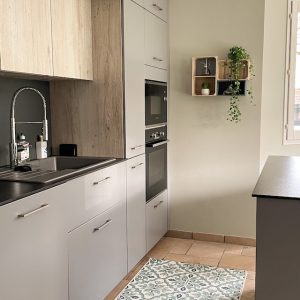Logistics is often overlooked, although it’s a common belief. The logistics of moving products from A to B are often overlooked by regulators, businesses, and the general public. The Code of Federal Regulations for Food and Drugs Title 21 has many pages dedicated to the application and licensing of drugs, as well as requirements for paperwork, manufacturing, and labeling. It gives very little guidance on pharmaceutical warehouse requirements and design, and offers just one suggestion for warehouse layout, specifying that pharmaceutical warehouses should function on a first-in, first-out basis to prevent drugs from expiring in storage.
When it comes to designing a pharmaceutical warehouse and developing storage and retrieval practices, pharmaceuticals corporations and their logistics managers are largely left to their own devices. They must follow best practices in pharmaceutical handling and design warehouses that safely store and deliver pharmaceuticals. Logistics managers are often forced to work with outdated equipment and facilities that aren’t up-to-the task. There are strong arguments to ensure that your warehouse is well-designed, automated, and equipped with the most current technology.
Plan a streamlined pharmaceutical warehouse layout
It is crucial to optimize warehouse operation. Pharmaceutical corporations have unique challenges when designing warehouses or distribution centers layouts due to the nature and products they sell. Pharmaceuticals are sensitive not only to external contamination from bacteria or chemicals but also to temperature changes. Sometimes, lighting can cause damage to pharmaceuticals. Also, pharmaceuticals should be stored in a way that allows for easy access to a first-in/first-out system. This will ensure that these valuable and costly products are safe from theft and intentional contamination. This unique requirement means that there are many things to consider when setting up a warehouse of pharmaceutical storage.
A through the warehouse, which is the best layout for warehouses that deal with pharmaceuticals, is probably the best.
There are basically two types of warehouse workflow patterns. The “through” pattern directs the incoming pharmaceutical inventories to one side of the warehouse, and out the other side. A circular or “U shape” warehouse pattern allows traffic to flow around the storage areas at the center. Input and output are done through the same entrance/exit. Both patterns place high-demand items closer to the loading docks, while lower-demand items are further away. High-demand items in a “through” warehouse are placed near the exit and entrance, while lower demand items are close to the exterior walls. High-demand items in a warehouse with a U-pattern are located close to loading bays. Items placed further away from doors are the case when their frequency decreases. The back wall is where the lowest-demand items will be placed. Each layout has its advantages and disadvantages.
 Through Warehouse Advantages
Through Warehouse Advantages
- Linear Design: Because products travel only in one direction, it is easier to make sure that a shipping schedule is followed.
- Multiple Channels: The warehouse throughput can easily be divided into multiple channels that all flow in the same direction, making it less likely to pick the wrong item.
- Discrete Temperature Zones: Different lines of throughput can be designated as temperature-controlled areas or cold storage areas without overlapping with each other.
Circular Warehouse Advantages
- Combination Trips: You can dispatch a forklift to remove a load and to retrieve inventory in one trip since it will return to the same place.
- Cross-Docking: If products arrive at the loading dock, they can be shipped immediately without having to be put away or detailed a fork truck to make an extra trip in case of rush orders.
- Enhanced Space Control: Because there is only one entrance and exit to the warehouse it makes security easier and allows for better control of the temperature and the atmosphere.
A thorough warehouse will be the best choice for warehouses that deal with MHRA approved warehousing UK. It is required that first-in/first-out shipping be done. The linear product flow facilitates the organization and precise picking. Through-type warehouses are not common. These warehouses require access roads at both the output and input ends. Most warehouses have one entry point. However, some storage and retrieval methods can provide linear throughput within the warehouse regardless of the external form.
Automation and Equipment to Meet Pharmaceutical Warehouse Needs
Pallet racks are one way to make your warehouse’s layout more efficient. By improving cube utilization in the warehouse, pallet racks maximize the amount of product that your warehouse can hold. These racks can be combined with a pallet mole, also known as a pallet shuttle, to eliminate aisles in pharmaceutical warehouses. This automation is simple and cheap and operates on a linear basis.
A pallet mole system means that the first load to be placed on the racks will be the one picked for shipping.
A pallet mole, a simple device that runs on a track, lifts pallets from below and then runs them along with the rack to the next slot. The pallet is then placed there and returned to its input position. A pallet mole system means that the first load to be shipped out is the one placed on the racks. This means that pallet moles can be used to create a warehouse that is “through”, regardless of its external layout. This system also offers many advantages over the other major warehouse layouts, including:
- Discrete Channels: A pallet rack can have one row per row that can be used to store a pharmaceutical. This allows for multichannel warehouses with little cross-purpose work.
- Temperature Zones: You can place a pallet rack or a shuttle system in every temperature zone. This will allow for maximum volumes and efficient linear flow throughout the warehouse.
- Combination Movements: A forklift can be used to enter a product into a storage system on one side, and then pick up the product on the other side in a U-shaped arrangement.
This configuration allows for linear movement to be restricted to storage and retrieval areas. The warehouse also has one loading and unloading point. It is possible to maintain greater warehouse security and cross-docking capabilities. A pallet rack and pallet mole combination bring together the best aspects of both warehouse layouts.
 The reliability of plastic is crucial to keep automation running smoothly, without interruptions or product damages.
The reliability of plastic is crucial to keep automation running smoothly, without interruptions or product damages.
However, it does have one major disadvantage. It can be expensive and time-consuming to take out all products from affected channels and clear the issue. In other words, getting the most out of supply chain automation means taking care to only use strong and reliable equipment.
Plastic pallets are required for warehouse automation. Plastic shipping platforms are stronger than wood and have the same weights and dimensions as wood. The reliability of plastic is key to keeping automation functioning smoothly without interruptions or product damage. Plastic pallets can also be washed and sanitized before being put to use, helping to keep pharmaceuticals and the supply chain equipment that handles them-like racks and pallet moles-free from contamination. Although pharmaceutical companies may determine the requirements for their warehouses, plastic pallets can help them set a high standard.





